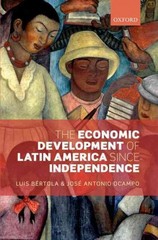Problem 3 Partnerships. Two law partners jointly own a rm and share equally in its revenues. Each law partner individually decides how much e'or't to put into the rm. The rm's revenue is given by 4(31 + 52 + bslsz) where 31 and .32 are the efforts of the lawyers I and 2 respectively. The parameter b > 0 reects the synergies between their efforts: the more one lawyer works, the more productive is the other. Assume that 0 S b S i, and that each effort level 5',- = [0, 4]. The payoffs for partners I and 2 are: 1 2 [4(51 + 32 + bslsz)] 3% H1 (81, S2) 1 11.2 (.31, 32) = E [4(51 + 32 + 53132)] _ 3% respectively, where the 3? terms reflect the cost of effort. (Notice that the cost of providing another unit of e'or't is increasing in the amount of effort already provided). Assume the rm has no other costs. (a) Show that this game has a Nash Equilibrium where sf = s; = 115. (b) Suppose that the partners both agree to work the same amount as each other, and that they write a contract specifying that amount. What common amount of effort 3'\" should they agree each to supply to the firm if their aim is to maximize revenue net of total effort costs. How does this amount compare to the effort levels we found in (a). Give a brief intuition for this comparison. [Hint: for the intuition, it may help to consider the special case b = 0.] (c) Suppose now that the contract is only binding on partner 2. That is, partner 2 has to provide the effort level 3'\" you found from part (b), but partner 1 is free to choose any effort level between 0 and 4. What e'or't level will partner 1 choose? How does this amount compare to s; and to 31\"\". Give a brief intuition for you answer. (d) Return to the basic game we discussed in (a), but now assume that b = %; that is, the partners' e'orts have negative synergies. Solve for the best-response functions in this case, and draw the bestresponse diagram. Find the set of nash equilibria. Again, compare these effort levels with those that the partners would choose if they could contract to provide the same amount as each other. [Hint: you do not need to re-do all the work ofpart (a).]







